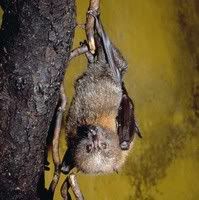
I guess this week is going to have more than one animal attack update–above is a photo of Tatiana the San Francisco tiger from Wikipedia.
About a week ago everyone was buzzing about how the tiger attack at San Francisco Zoo was due to short staffing during the holidays according to the investigation and subsequent report.
Wow, deja vu.
Accidents happen due to staffing shortages and keeper errors frequently and on Christmas Day of 1994 I took a tumble off the top tier of the zoo hay barn. I was loading hay for the elephants I was training because we were short handed–falling somewhere between 12-15 feet.
They didn’t take X-rays, missed the concussion, and since I was in shock–pumped full of adrenalin–it was only at the urging of a coworker that I actually went to see the zoo medic.
Today, I still receive treatment and the accident is how this website came about–and why I actually began writing. I would not work the elephants while I was on medications and could not work the elephants immediately after the injury.
My point is that such events change lives and the short staffing forever changed the lives of the victims and employees of the San Francisco Zoo after the tiger attack.
It never ceases to amaze me just how slow the zoo and animal world changes. When I talked to one of the people interested in working to change the San Francisco Zoo after the attack–he asked me if the zoo was archaic.
In light of the Lion House and Grotto incidents and coverage–it was a naive question. Of course it is.
The Lion House feeding fiasco is an old tradition long gone from most zoos and innovative animal collections.
I remember visiting the SF Zoo on a consultation–the member of the Lion House staff was getting ready to retire and was an old school guy. In the past, zoo keeping was not a glorified or skilled professional–it was little more than a glorified janitor position. Hence, you still have a vast array of caretakers and views related to animal management.
The Lion House guy puffed up with pride, strutted up and down in the front of the cages building tension, and then reveled in the attention and gasps from the crowds as “his” charges reacted with the primal response few people see a predator display.
Now all animal caretakers love their charges but this was a man whose identity was wrapped up in a show that did nothing to educate the masses.
The actions enthralled and filled people with an eyeful of just what a predator can be. This is in direct contrast to the calm demeanor most people see on exhibit which leads the general public to think that the massive cats are simply larger versions of their household felines–nothing could be further from the truth.
So, on the one hand it opened another window into the hidden world of captive wildlife management that most people never see–while on the other hand–it made me cringe.
Most zoos are archaic in some respect. Some can’t afford the upgrades to enclosures or they focus on the public image versus what is good for the animals.
Others are slow to implement the most innovative equipment or employee training standards. But this is true for any type of business–not just zoos.
So, add this attack to a growing list of human error–design and scheduling.



